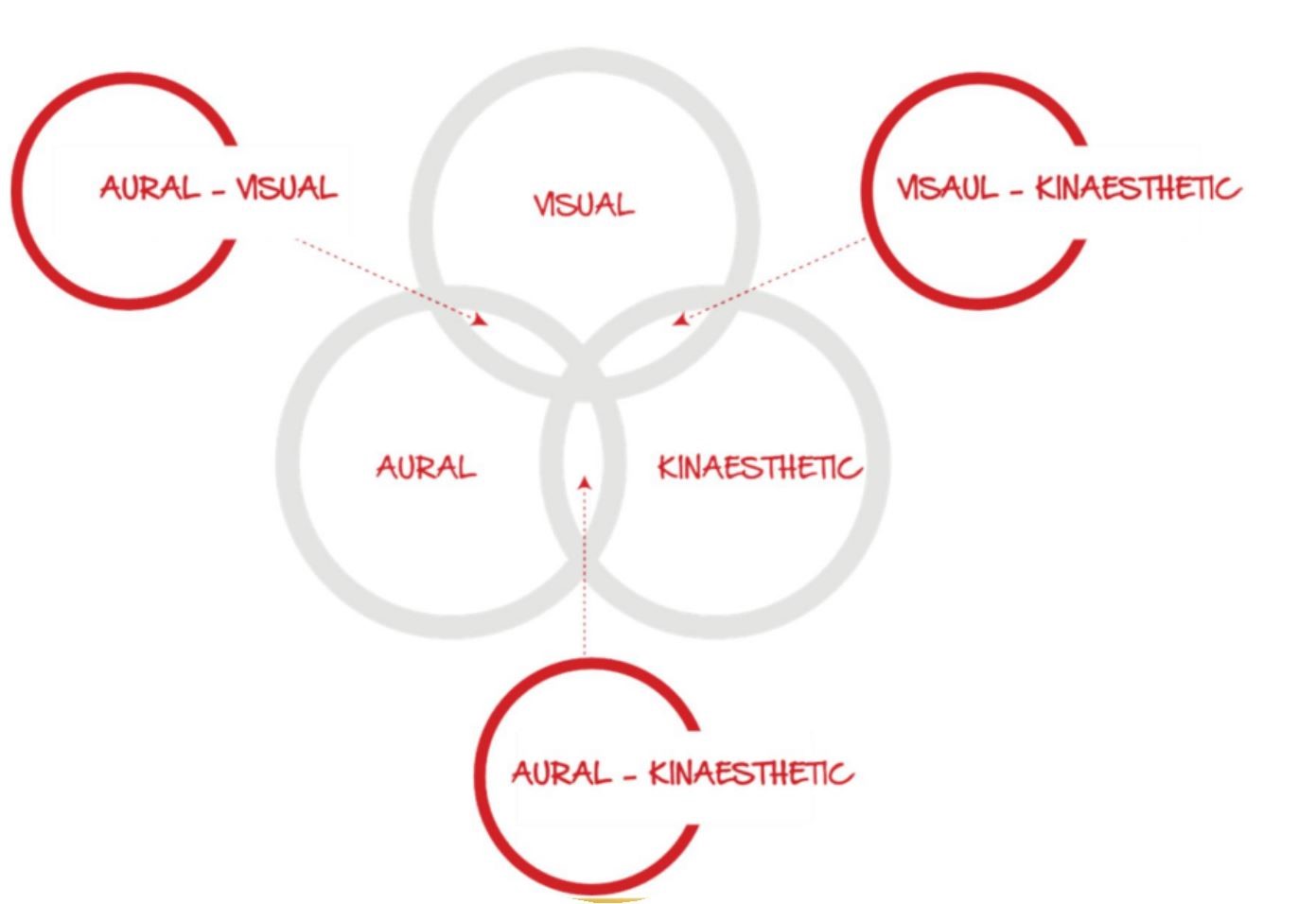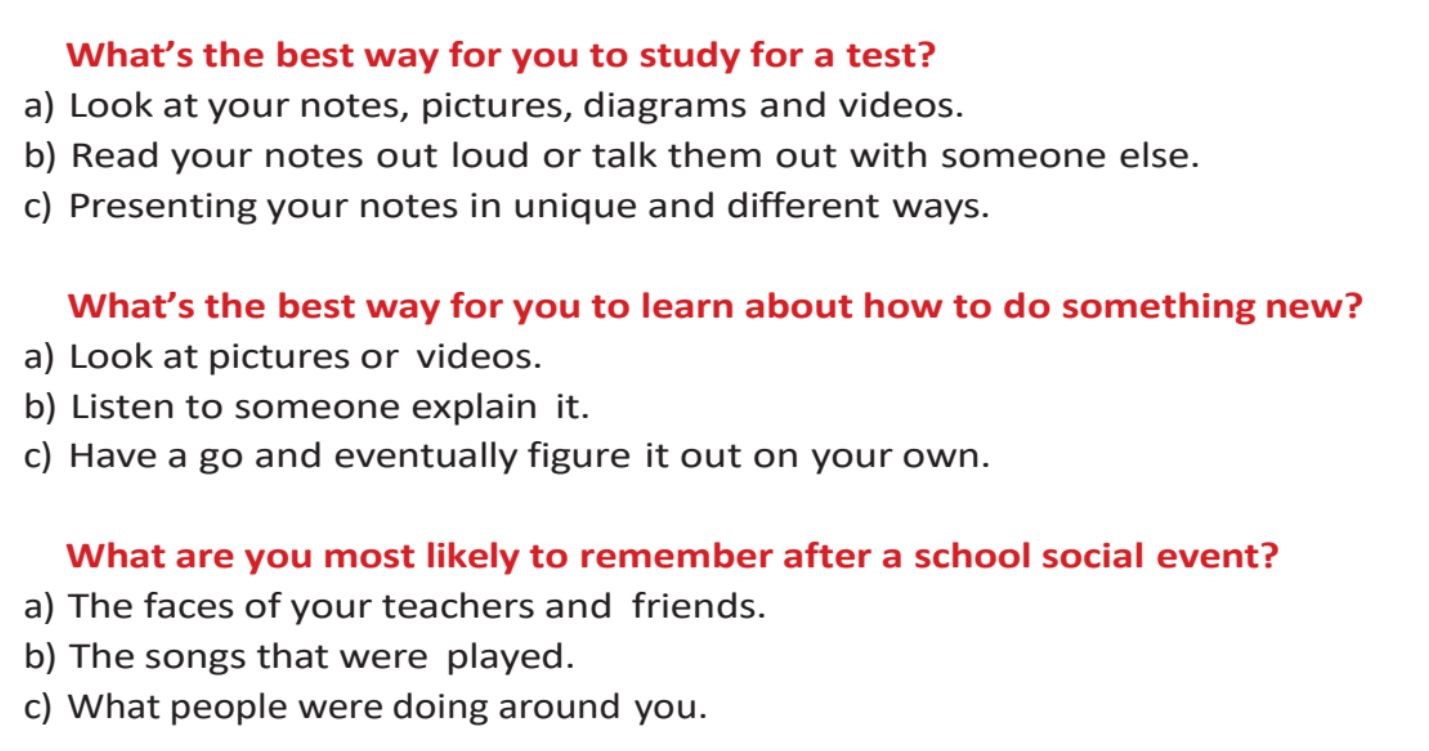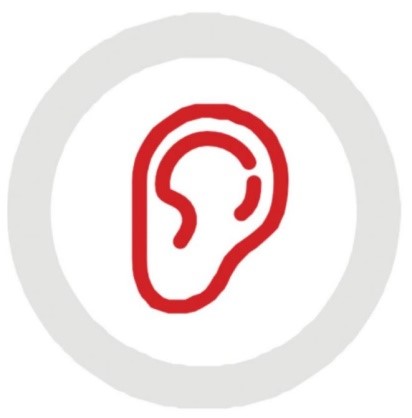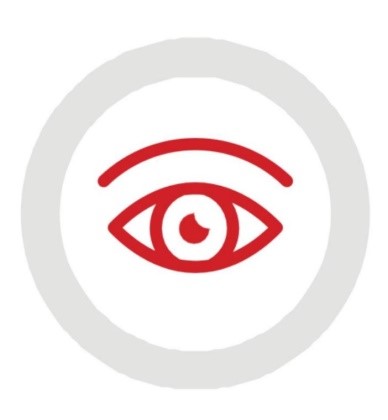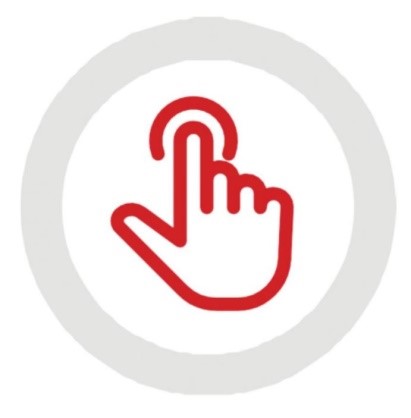What Is Your Child’s Learning Style? Kinaesthetic, Aural & Visual Learning Styles | A Team Tuition
As the old saying goes, practice does make perfect, but not all of us practice the same way. There is a scientific explanation for why all humans learn differently.
As we interact with the world around us, we rely on our five senses to absorb and comprehend information. Naturally, we will favour some senses over others.
The combination of which of the senses a person uses in this process determines what we call a person’s learning style.
There are three primary learning styles– visual, aural and kinaesthetic – however people may be a combination of any of these, as the diagram below suggests:
“How do I find out my child’s learning style?”
Great question! (And an important one too). A Team Tuition has developed a diagnostic, learning style test which all of our tutor’s use with their students to determine their learning style. This test asks a series of multiple choice questions (some of which are shown below), and offers responses varied by their sensory focus.
‘A’ responses focus primarily on a visual engagement, ‘B’ responses on the use of speech and sound, and ‘C’ responses on actions and the surrounding environment.
Learning Style Test
You can use these questions to help identify your child’s learning style. Additionally, you might think of some more of your own, or pay attention to the way your child behaves in certain situations.
Does your child remember people’s faces while perhaps forgetting their names? Do they decorate school books with colours and drawings? In your child’s opinion, is YouTube the greatest educational tool ever invented? If so, chances are your child is a visual learner who responds well to anything that engages their sense of sight.
Do you ever notice your child staring into space when you’re trying to demonstrate and explain something to them? Yes? There’s a good chance they might be an aural learner who is actually paying close attention to the words, while not engaging with your actions.
Is your child always fidgeting? Maybe they’ve even asked for a stress ball? Do they like to get their hands dirty, finding themselves in their element learning new trades and crafts? Does your child find school a little boring and hard to engage with, but instead thrives in more flexible and hands-on environments? In all likelihood, your child is a kinaesthetic learner. They learn best by simply doing.
Once you’ve identified your child’s learning style, the next step is to understand its unique characteristics, and ways and means to get the most out it.
What is Aural Learning?
Aural learners lean primarily on their sense of sound. They love words, rhythms, tempos, lyrics and tones. They thrive in the traditional classroom environment, with a teacher explaining concepts mainly through speech, because they can soak up much of what is being said and recall it even after class has finished.
Aural learners tend to make great readers, writers, speakers and musicians. Their intimate understanding of rhythm and sound allows them to analyse and employ language (including the language of music) masterfully.
Think about someone like the great Ray Charles. Despite being blinded as a child, Charles was able to absorb and process information with his ears. Without the aid of sheet music, he became a master pianist and pioneered the soul music genre. Charles enjoyed a long and illustrious career which included 17 Grammy Awards and 11 number ones.
“What are the best aural learning strategies?”
As we have discovered, aural learners respond best to anything that engages their sense of sound, and are more likely to retain information gleaned in this fashion. Some strategies and activities that would be of great benefit to an aural learner include:
- Reciting flashcards aloud. While flashcards are great for visual learners, reciting them out loud brings the ears into the fold, adding a rhythmic dimension.
- Teaching content to someone else. It is often said that you don’t truly know something unless you can teach it to another. Having an aural learner try and express content through speech is a great way for them to synthesise and remember their thoughts and ideas.
- Engaging in discussions. Bouncing ideas off others allows aural learners to hear their thoughts out loud and analyse them more effectively, and also provides an opportunity to soak up other perspectives.
- Using podcasts. The trend of the 21st Century! The world of podcasts is continually expanding, and you can find one on just about anything these days. Podcasts may be a great way to get some introductory knowledge on a topic, or to complement what may already be known.
- Recording notes for playback. Think of this one like a DIY podcast. If you’ve got a smartphone, it’s as simple as speaking your written notes into the voice recorder, hitting save and then pressing play. Voila, a bespoke educational podcast!
- Inventing rhymes or songs. Aural learners probably know the tune to the alphabet song as well as the order of the letters themselves. Creating rhymes or songs is a fun and effective way to use sound to make content more engaging and memorable.
What is Visual Learning?
Visual learners engage with the world around them first and foremost with their eyes. They pay attention to colours, lines, designs, patterns and spatial parameters. Elements of the traditional classroom suit them to a tee, such as the use of whiteboards, smartboards, educational videos and worksheets.
Visual learners are intimately aware of their spatial surroundings, and therefore tend to make great artists, architects and designers.
To some, a blank canvas is a no-go zone, or simply a weekend pastime. To people like Pablo Picasso or Leonardo Da Vinci, however, a blank canvas is a masterpiece waiting to be brushed to life, an opportunity for poetic and political expression. Their rich grasp of colours and patterns delivered us the Mona Lisa and the Guernica.
“What are the best visual learning strategies?”
The most effective study strategies for visual learners will engage their sense of sight. Some of the best examples include:
- Colour coding. Those 4-colour biro pens and multi-packs of highlighters are your best friend. Organising different topics or ideas with different colours is an excellent way for visual learners to subconsciously form connections between content and commit it to memory.
- Mind maps. By reorganising content into mind maps, connections between different materials can be seen much more easily.
- Using videos. YouTube is a gold mine for visual learners! You can find a video on just about anything on these days, including educational animations and infographics. The visual dimension of videos can hammer a piece of information home much more quickly and effectively than a wordy textbook for learners that rely on using their eyes.
- Use graphics and diagrams. Visual learners remember things they see. Supplementing written material with graphics or diagrams will dramatically assist their ability to recall material.
- Organise your notes. It may sound like a no-brainer, but this is particularly important for visual learners. Remembering that visual cues are these individuals’ primary means of interacting with the world, an organised work space translates to an organised mind ready to learn.
What is Kinaesthetic Learning?
Kinaesthetic learners have a feel for the world around them. These learners use their sense of touch as the primary means of interacting with their environment. They won’t necessarily remember the specifics of a conversation, or who they had it with, but they’ll likely remember where they were when they had it, and maybe even what the weather was like too. Kinaesthetic learners are likely to relish the more practical subjects at school like physical education and design and technology, but may find the conventional classroom environment boring.
Kinaesthetic learners remember what they do, and store information through action. Their intimate feel for the world means they tend to thrive in more hands-on professions like cooking and carpentry, and also make great athletes!
Think about someone like Usain Bolt. His imposing physique no doubt gave him an edge in his pursuit of sprinting domination, but his sense of what 10 seconds and 100 metres must feel like would be second-to-none. He would have an intimate understanding of every inch of the track, and what his body must be doing at every stage to achieve running perfection. He would have been able to just feel the difference between hundredths of a second in his training. This awareness ultimately aided Bolt to 9 Olympic gold medals and the fastest 100m and 200m times ever recorded.
“What are the best kinaesthetic learning strategies?”
The best strategies for kinaesthetic learning are those that engage the learner physically in some way, which could include:
- Use a stress toy or a fidget spinner. These kinds of toys may be seen by some as nothing but a distraction, but for a kinaesthetic learner they are a fantastic way to bring the hands into play while engaging in other tasks like making or reading notes.
- Create physical, hands-on activities and games. Get creative! Grab the costume box and do a Shakespearean role play, or set up an at-home supermarket to practice budgets and working out change. Anything hands-on will have a lasting impact on these learners.
- Try note taking on different platforms or devices. Recent technological innovations like the iPad are perfect for the tactile learner. Even the subtle difference between typing on a laptop and drawing using a touch pen can make a world of difference.
- Carefully curate a suitable study environment. As discussed, kinaesthetic learners are intimately aware of their surroundings. Too hot, too cold, too bright, too dark – if their study space is even slightly out of balance it can be hugely distracting. Creating a comfortable environment is critical.
Ultimately, it is important to remember that we use all of our senses at some point. While we may prefer some over others, the best learners are those who can employ bits of all three learning languages. They can all be nurtured with a little time and effort.
Help Your Child Develop an Effective Learning Strategy
Everyone learns and evolves differently, which is why attuning to our strengths is the best way to go forward. If you feel like your child could use extra support with focus and study motivation, contact A Team Tuition and discover how our tutors can help.

